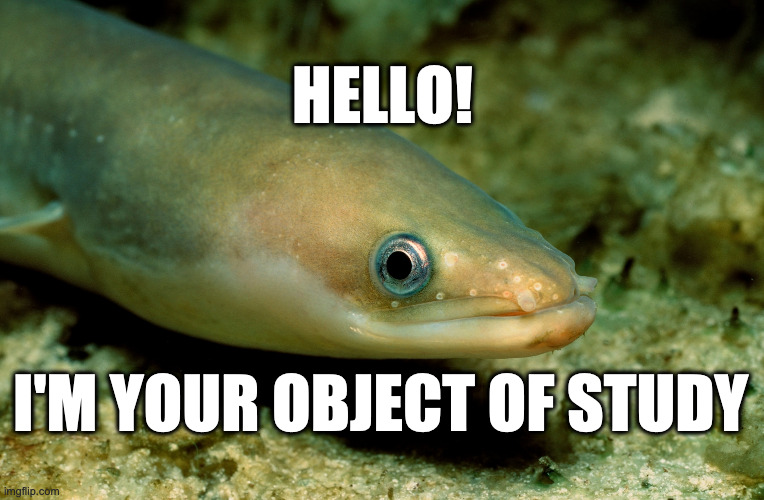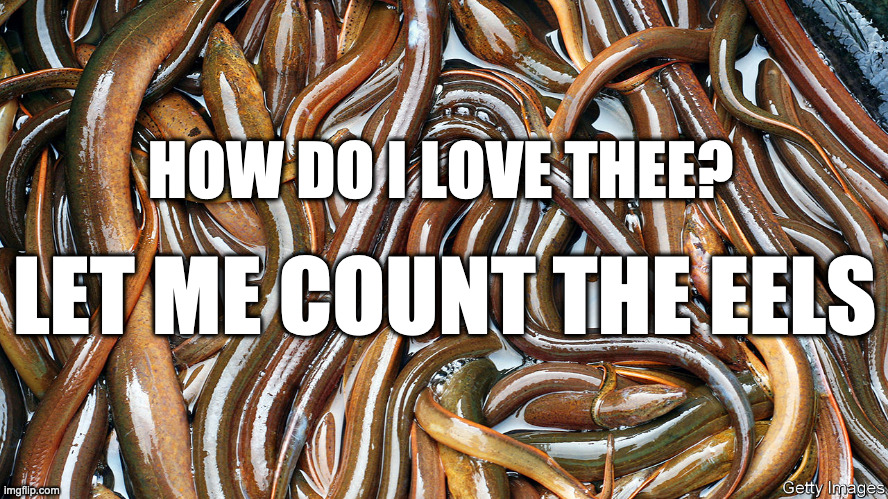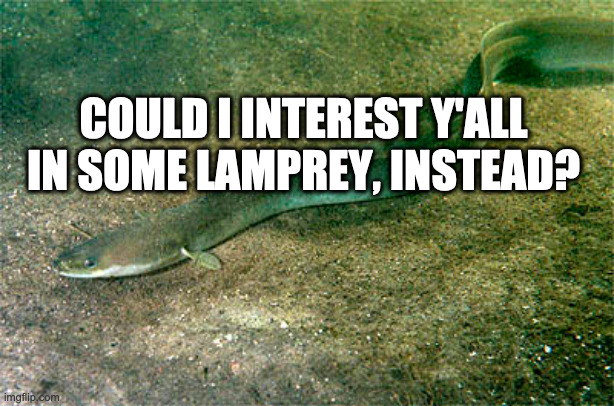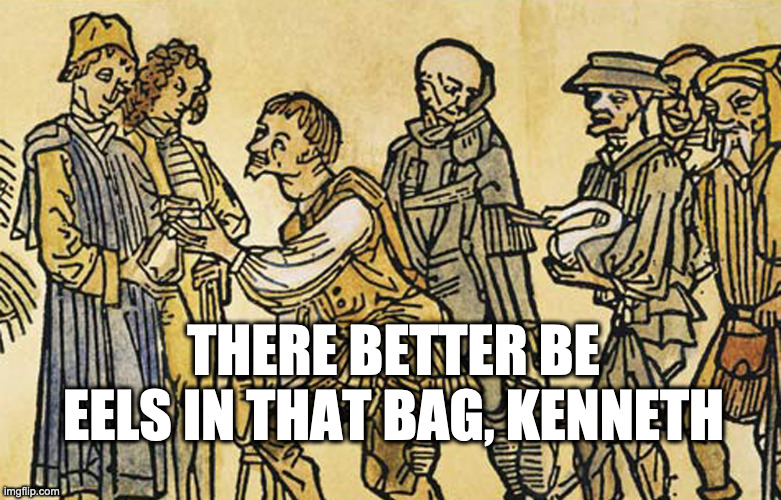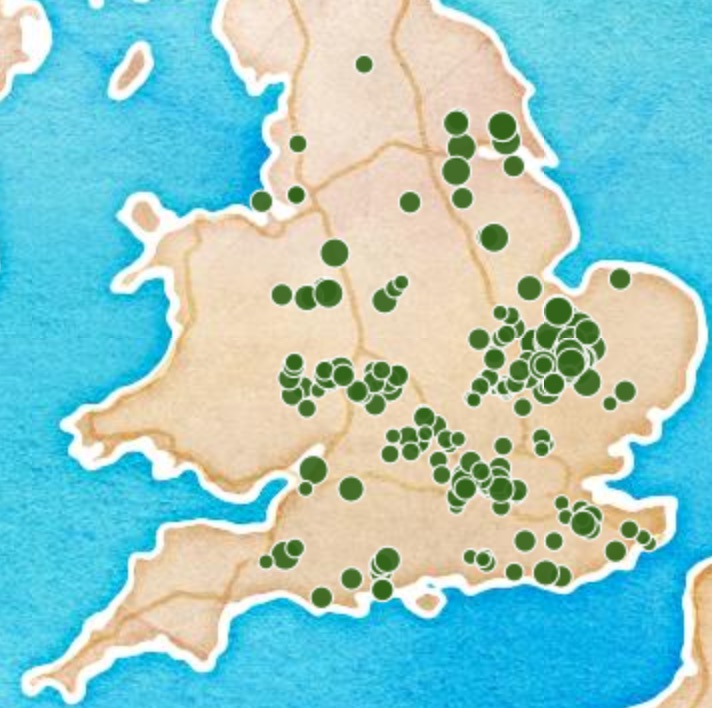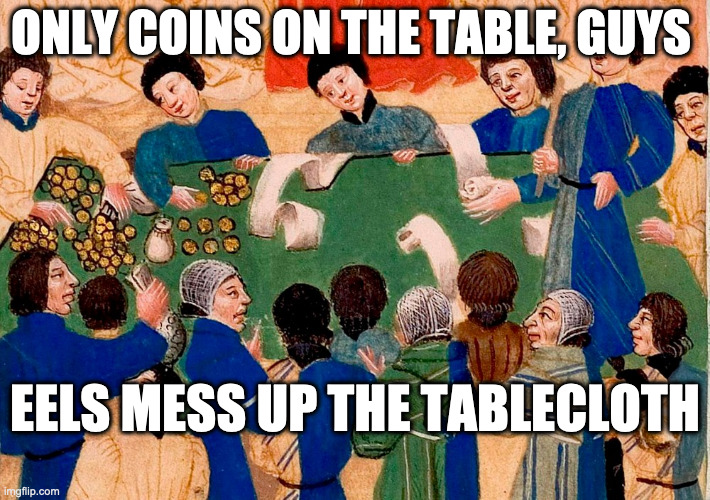So before we get started talking about historical English eels, lets take a second to define our fish. We& #39;re not talking about electric eels (which aren& #39;t actually eels!), or about any of the marine eels like morays or ribbon eels.
Nope. We& #39;re talking about European Eels. 1/14
Nope. We& #39;re talking about European Eels. 1/14
These are (mostly) freshwater fish & were quite numerous in European waterways. Historically as much as 50% of the fish biomass in European rivers was made up of eels.
But they& #39;re not born there. Eels have a fascinating life cycle & migration story. 2/14 https://twitter.com/greenleejw/status/1304482656281862145">https://twitter.com/greenleej...
But they& #39;re not born there. Eels have a fascinating life cycle & migration story. 2/14 https://twitter.com/greenleejw/status/1304482656281862145">https://twitter.com/greenleej...
People all over Europe ate eels. But the English perhaps more than most. From at least the Roman period onward, the fish formed an important part of the English diet & culture.
For the rest of this thread, we& #39;ll try to get a sense of how many eels we& #39;re talking about. 3/14
For the rest of this thread, we& #39;ll try to get a sense of how many eels we& #39;re talking about. 3/14
Eels appear 3x in the Venerable Bede& #39;s 8th C. "Ecclesiastical History of the English People." Bede notes them right at the start, as one of Britain& #39;s notable natural resources. He also tells us that the island of Ely is named for them. 4/14 https://twitter.com/greenleejw/status/1285204300550090754">https://twitter.com/greenleej...
This is the first time -- but not the last! -- that we& #39;ll see English place names that reflect a history with the eels.
Bede also tells the story of St. Wilfrid& #39;s conversion of the South Saxons -- a people who ONLY ate eels (as the story goes). 5/14 https://twitter.com/greenleejw/status/1186633708213809152">https://twitter.com/greenleej...
Bede also tells the story of St. Wilfrid& #39;s conversion of the South Saxons -- a people who ONLY ate eels (as the story goes). 5/14 https://twitter.com/greenleejw/status/1186633708213809152">https://twitter.com/greenleej...
It& #39;s a hard to say how many eels the early medieval English ate. But eels bones are common at archeological sites & we know from isotope analysis of human remains that the English were eating more eels than all other freshwater fish combined, & than all marine fish combined. 6/14
Once we get to the 10th & 11th centuries it gets easier to tell how many eels we& #39;re talking about. & #39;Cause at that point we have records of eel-rents. These were in-kind rents paid in eels. Secular & religious landlords all over the country collected eels in large numbers. 7/14
How many? Well...the 1086 Domesday Book -- the Norman conquerors survey of their lands -- shows more rents for eels than grain.
But how many? Well...at the end of the 11th C. there were at least 539,785 eels being paid in rent in England each year. Here& #39;s a map: 8/14
But how many? Well...at the end of the 11th C. there were at least 539,785 eels being paid in rent in England each year. Here& #39;s a map: 8/14
"But why?" I hear you ask. There were several reasons. Firstly, there wasn& #39;t much hard currency. So in-kind rents made sense.
But why eels? And why so many? Some of the biggest rents were for 50K+ eels per year. What do you even do with that? 9/14 https://twitter.com/greenleejw/status/1206606008761622528">https://twitter.com/greenleej...
But why eels? And why so many? Some of the biggest rents were for 50K+ eels per year. What do you even do with that? 9/14 https://twitter.com/greenleejw/status/1206606008761622528">https://twitter.com/greenleej...
Many of the eel-rents were due at Lent, & that wasn& #39;t an accident. They& #39;re a great Lenten food. You& #39;re not supposed to think about carnal things during Lent, & flesh meat makes you think of fleshy sins.
But medieval people believed that eels were asexual.
Perfect! 10/14
But medieval people believed that eels were asexual.
Perfect! 10/14
But it wasn& #39;t just peasants using eels as a pseudo currency. Sometimes monastic houses payed their own debts in the eels.
In the 11th C. Ramsey Abbey paid 4k eels per year to Peterborough abbey for building stone. And that wasn& #39;t the end of it. 11/14 https://twitter.com/greenleejw/status/1306216270468005891">https://twitter.com/greenleej...
In the 11th C. Ramsey Abbey paid 4k eels per year to Peterborough abbey for building stone. And that wasn& #39;t the end of it. 11/14 https://twitter.com/greenleejw/status/1306216270468005891">https://twitter.com/greenleej...
In-kind rents largely disappeared in the 12th C. as hard currency became more wide-spread, but eel-rents hung on. In the 13th C. there were still 400,000+ eels being paid each year. It wasn& #39;t really until the Black Death that the practice really saw a sharp decline. 12/14
Even so, they lasted for quite a while, not vanishing wholly until the 17th C.
Here& #39;s a link to an interactive map with more details about English eel-rents. Clicking on any dot will give you information about the rent, & the source it comes from. 13/14 https://historiacartarum.org/eel-rents-project/english-eel-rents-10th-17th-centuries/">https://historiacartarum.org/eel-rents...
Here& #39;s a link to an interactive map with more details about English eel-rents. Clicking on any dot will give you information about the rent, & the source it comes from. 13/14 https://historiacartarum.org/eel-rents-project/english-eel-rents-10th-17th-centuries/">https://historiacartarum.org/eel-rents...

 Read on Twitter
Read on Twitter